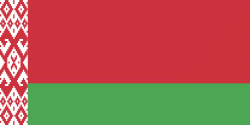Skidzyel’ (Skidel’)
Skidzyel (Скідзель), also Skidal (Скідаль; Skidlius; Skidel; Скидель), is a town in the Grodno Region of Belarus located 31 kilometers from Grodno.
Within the Grand Duchy of Lithuania, Skidzyel’ was part of Trakai Voivodeship. In 1795, the town was acquired by the Russian Empire as a result of the Third Partition of Poland.
From 1921 until 1939, Skidzyel’ was part of the Second Polish Republic. Skidziel is sometimes referred to as a former shtetl because 80% of its population was Jewish before the Holocaust.
On 18 September 1939, in the course of the Soviet invasion of Poland, Skidzyel’ was the site of a pro-Soviet communist revolt against the Polish government leading to massacre of ethnic Poles by killing squads deployed by delegalized Communist Party of Western Belarus, armed with the smuggled Soviet guns soon before the invasion. The event is referred to by historians as the Skidel revolt. On 19 September, a unit of the Polish Army restored Polish control in Skidzyel’, but the next day, 20 September, the town was occupied by the Red Army and, on 14 November 1939, incorporated into the Byelorussian SSR.
From 27 June 1941 until 14 July 1944, Skidzyel’ was occupied by Nazi Germany and administered as a part of Bezirk Bialystok. Small shootings of Jews in the forest close to the city were frequent. The ghetto, where they were kept as prisoners, was liquidated on November 2, 1942. The Jews were taken to nearby Kolbassino (Kiełbasin) Sammellager transit camp to the south, packed with Jews of the Grodno Ghetto. At this time, they were 22,000 to 28,000 people in the camp. From there, they were sent aboard Holocaust trains to Auschwitz extermination camp.
After World War II, the Grodno headquarters of the Communist Party of the Soviet Union was located in Skidal until the collapse of the Soviet Union in 1991.
Within the Grand Duchy of Lithuania, Skidzyel’ was part of Trakai Voivodeship. In 1795, the town was acquired by the Russian Empire as a result of the Third Partition of Poland.
From 1921 until 1939, Skidzyel’ was part of the Second Polish Republic. Skidziel is sometimes referred to as a former shtetl because 80% of its population was Jewish before the Holocaust.
On 18 September 1939, in the course of the Soviet invasion of Poland, Skidzyel’ was the site of a pro-Soviet communist revolt against the Polish government leading to massacre of ethnic Poles by killing squads deployed by delegalized Communist Party of Western Belarus, armed with the smuggled Soviet guns soon before the invasion. The event is referred to by historians as the Skidel revolt. On 19 September, a unit of the Polish Army restored Polish control in Skidzyel’, but the next day, 20 September, the town was occupied by the Red Army and, on 14 November 1939, incorporated into the Byelorussian SSR.
From 27 June 1941 until 14 July 1944, Skidzyel’ was occupied by Nazi Germany and administered as a part of Bezirk Bialystok. Small shootings of Jews in the forest close to the city were frequent. The ghetto, where they were kept as prisoners, was liquidated on November 2, 1942. The Jews were taken to nearby Kolbassino (Kiełbasin) Sammellager transit camp to the south, packed with Jews of the Grodno Ghetto. At this time, they were 22,000 to 28,000 people in the camp. From there, they were sent aboard Holocaust trains to Auschwitz extermination camp.
After World War II, the Grodno headquarters of the Communist Party of the Soviet Union was located in Skidal until the collapse of the Soviet Union in 1991.
Map - Skidzyel’ (Skidel’)
Map
Country - Belarus
 |
 |
| Flag of Belarus | |
Until the 20th century, different states at various times controlled the lands of modern-day Belarus, including Kievan Rus', the Principality of Polotsk, the Grand Duchy of Lithuania, the Polish–Lithuanian Commonwealth, and the Russian Empire. In the aftermath of the Russian Revolution in 1917, different states arose competing for legitimacy amid the Civil War, ultimately ending in the rise of the Byelorussian SSR, which became a founding constituent republic of the Soviet Union in 1922. After the Polish-Soviet War, Belarus lost almost half of its territory to Poland. Much of the borders of Belarus took their modern shape in 1939, when some lands of the Second Polish Republic were reintegrated into it after the Soviet invasion of Poland, and were finalized after World War II. During World War II, military operations devastated Belarus, which lost about a quarter of its population and half of its economic resources. The republic was redeveloped in the post-war years. In 1945, the Byelorussian SSR became a founding member of the United Nations, along with the Soviet Union.
Currency / Language
| ISO | Currency | Symbol | Significant figures |
|---|---|---|---|
| BYN | Belarusian ruble | Br | 2 |
| ISO | Language |
|---|---|
| BE | Belarusian language |
| RU | Russian language |















